Waking up on day two in Bhutan and it felt like we’d experienced a lot already. And yet there was so much more to come in Thimphu alone, the country’s fascinating and colourful capital.
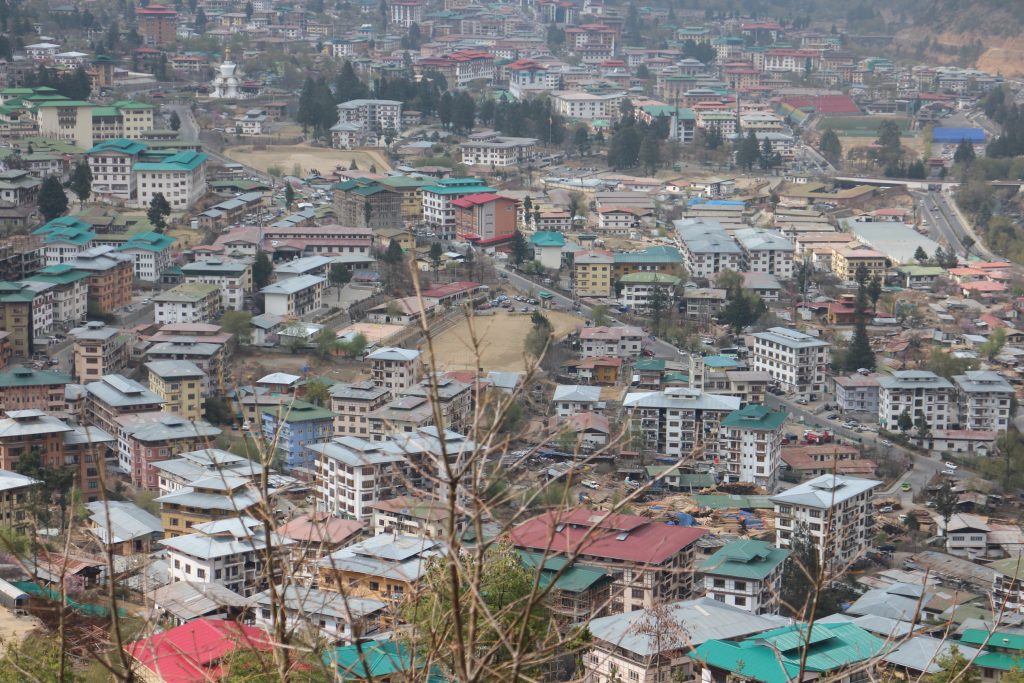 Every morning our guide Kencho was ready and waiting and first asked “how was your rest” and every day we usually said “yes fine thank you”. In truth it’s not the most restful sleep I’ve ever had, but weirdly I never felt the worst for it. I’m pretty sure it’s the high altitude that makes it feel as if you’re not quite asleep when you probably are.
Every morning our guide Kencho was ready and waiting and first asked “how was your rest” and every day we usually said “yes fine thank you”. In truth it’s not the most restful sleep I’ve ever had, but weirdly I never felt the worst for it. I’m pretty sure it’s the high altitude that makes it feel as if you’re not quite asleep when you probably are.
The barking dogs can be an issue too, though I found earplugs dealt with that ok. For some reason Bhutan has a high population of stray dogs and quite a lot of them hang out in Thimphu’s Clocktower Square, which our room overlooked. Kencho tried to tell us the dogs had walked there from India, but when I questioned how far we were from a border, even he looked like he didn’t believe the tall tale he was telling!
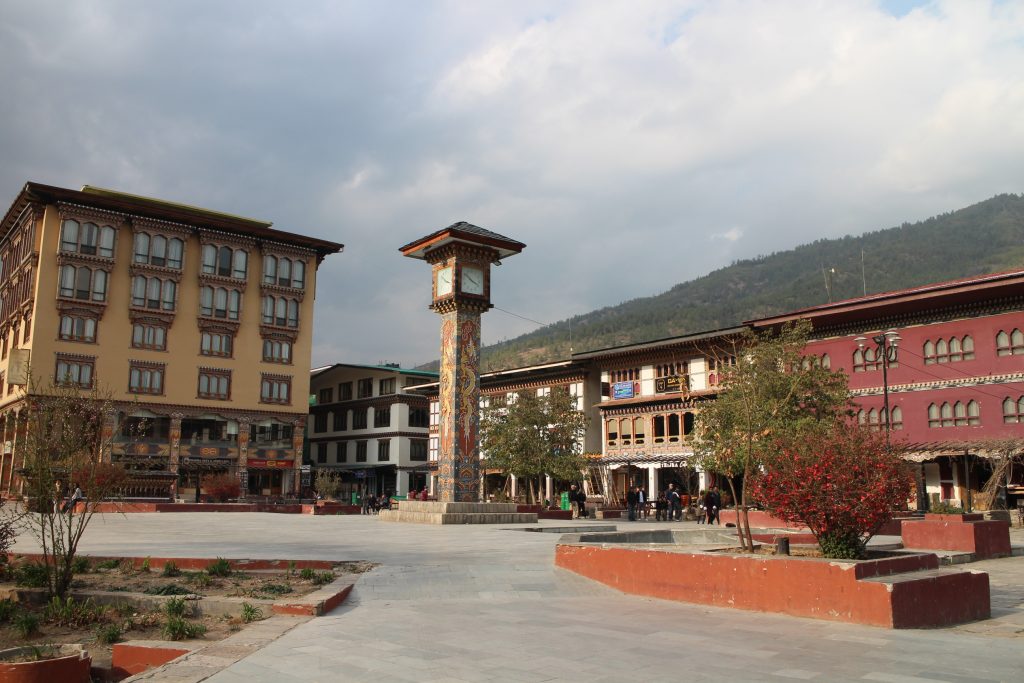 Our first stop of the day was the National Memorial Chorten, one of my favourite Thimphu highlights. The Tibetan style chorten, known as a stupa in other Buddhist countries, was built as a memorial to the Third King by his wife – fortunately he just had the one wife, so no confusion about which one. As mentioned in my first Thimphu post things are a bit more complicated with his son and heir.
Our first stop of the day was the National Memorial Chorten, one of my favourite Thimphu highlights. The Tibetan style chorten, known as a stupa in other Buddhist countries, was built as a memorial to the Third King by his wife – fortunately he just had the one wife, so no confusion about which one. As mentioned in my first Thimphu post things are a bit more complicated with his son and heir.
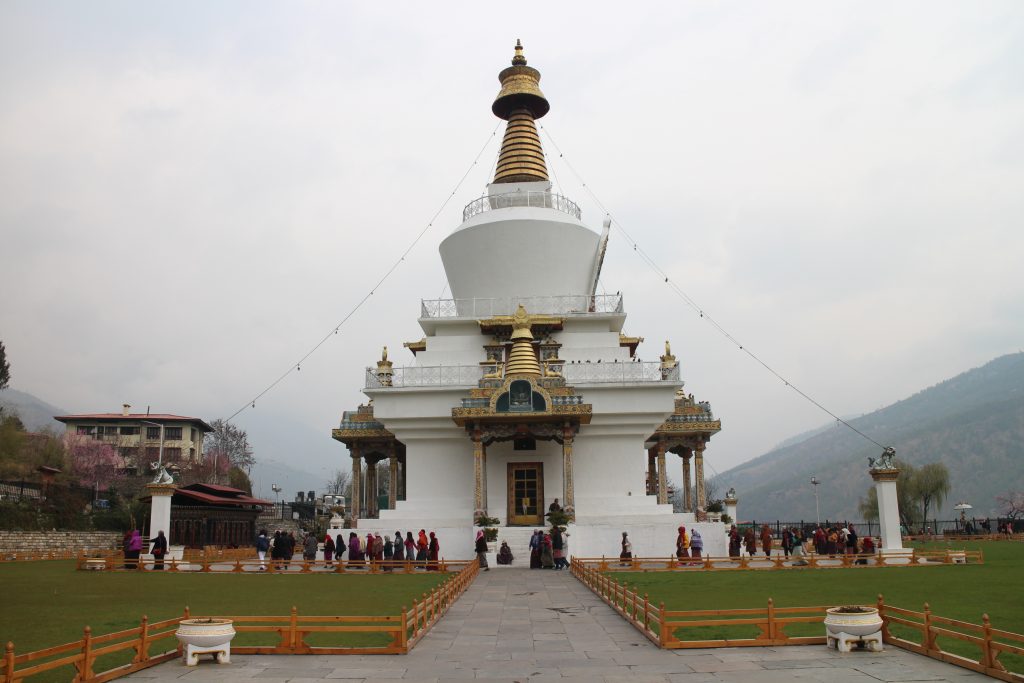 You can go inside and climb up to the three different levels. It was quite early so the caretaker monk was still chanting his prayers, having filled at least seven water bowls and lit the butter lamps. These can be quite a hazard and in many temples we visited they were outside and only the elaborate butter cakes, made for rituals, were inside.
You can go inside and climb up to the three different levels. It was quite early so the caretaker monk was still chanting his prayers, having filled at least seven water bowls and lit the butter lamps. These can be quite a hazard and in many temples we visited they were outside and only the elaborate butter cakes, made for rituals, were inside.
But the reason this visit was a highlight was what was happening outside. The chorten is where many Bhutanese come for their daily worship and they practice it by circumambulating. That means walking around it and some people do it all day long, twirling their prayer wheels. They tend to be older people who maybe don’t have families, or their families are out at work, so I guess it’s a bit like a walking social club. There are also a few elderly worshippers who endlessly turn the giant red prayer wheels by the entrance.
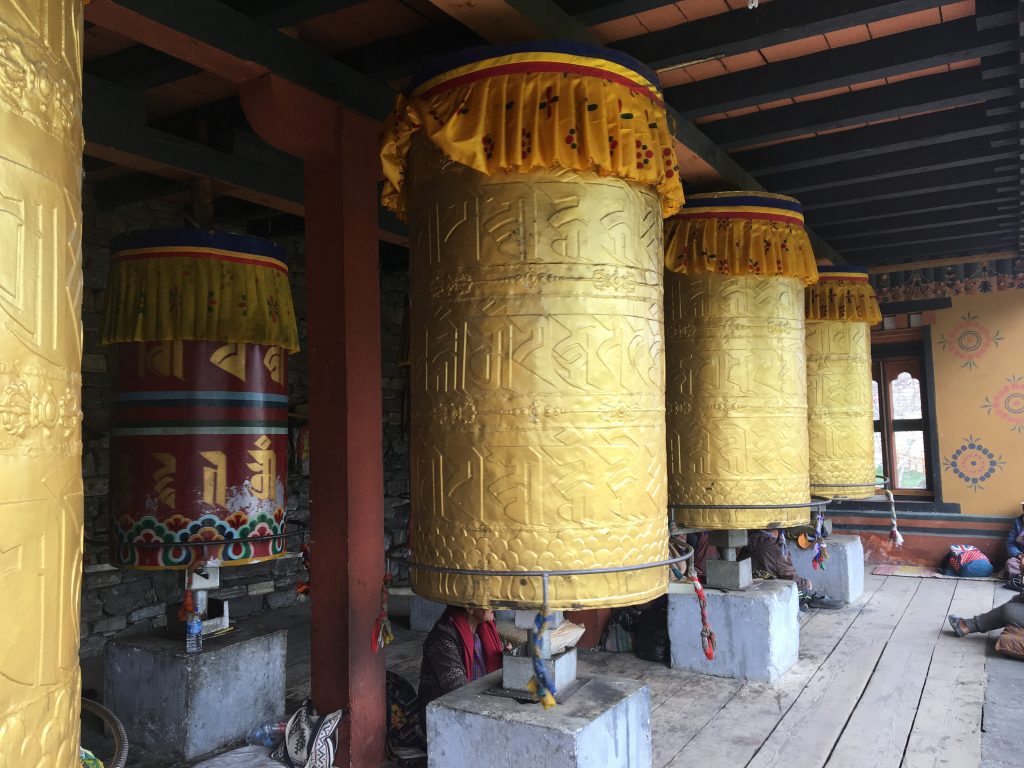 Talking of butter lamps our next stop was brief one at the Ziluka Nunnery where they are housed in a separate building because of the smoke damage that was being caused to the 15th century temple. Having a baby girl is considered to be a great thing in Bhutan and if a family can’t afford to educate her they try to send her to a nunnery. This one was built by a Buddhist master and to date only men are Buddhist teachers, even in the nunneries.
Talking of butter lamps our next stop was brief one at the Ziluka Nunnery where they are housed in a separate building because of the smoke damage that was being caused to the 15th century temple. Having a baby girl is considered to be a great thing in Bhutan and if a family can’t afford to educate her they try to send her to a nunnery. This one was built by a Buddhist master and to date only men are Buddhist teachers, even in the nunneries.
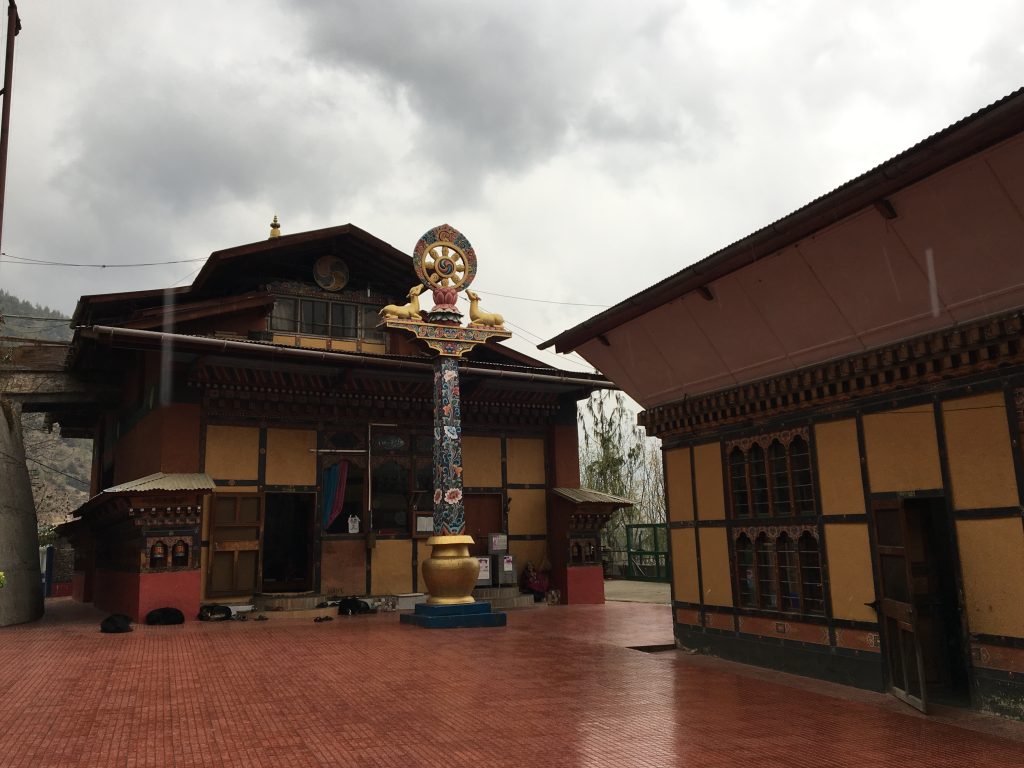 Another strange thing is the national animal of Bhutan, the takin, which looks like it has the head of the goat and the body of a cow. Keeping animals in a zoo isn’t really in keeping with Bhutan’s philosophies, so the Fourth King had them released. But the takins were so tame they just wandered aimlessly around Thimphu. So they were put back into the Takin Sanctuary where you can also see some deer and mountain goats.
Another strange thing is the national animal of Bhutan, the takin, which looks like it has the head of the goat and the body of a cow. Keeping animals in a zoo isn’t really in keeping with Bhutan’s philosophies, so the Fourth King had them released. But the takins were so tame they just wandered aimlessly around Thimphu. So they were put back into the Takin Sanctuary where you can also see some deer and mountain goats.
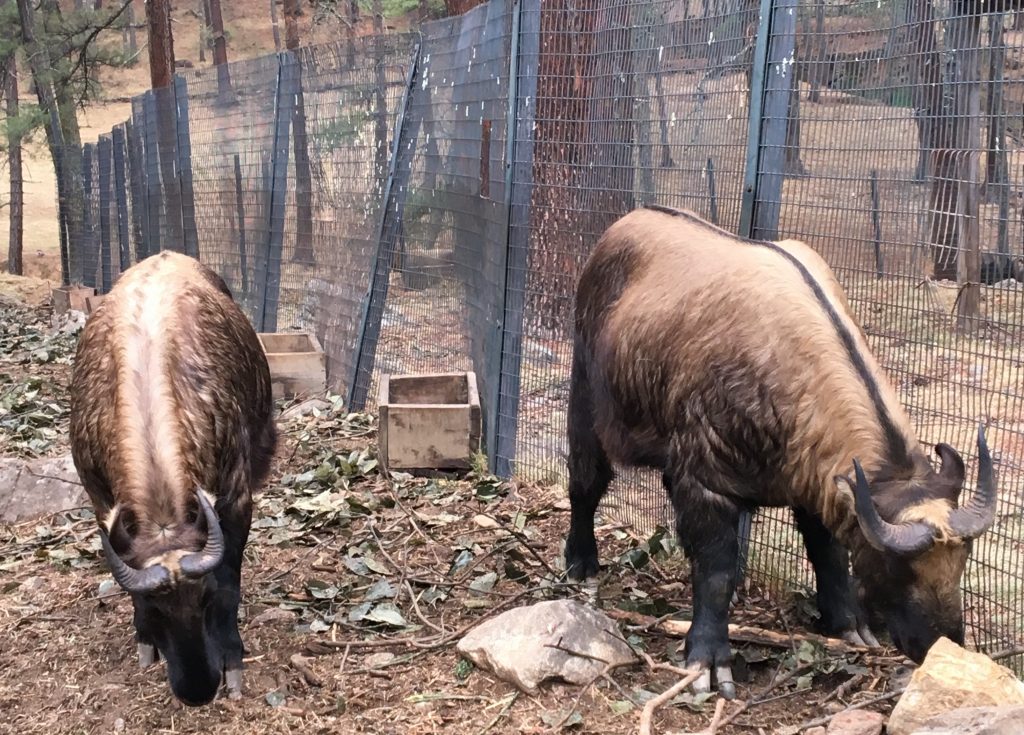 Traditions were next on the list starting with a look around the National Institute of Traditional Medicine. An amazing array of medicinal plants are on display and are regularly used by Bhutanese doctors. The most famous is the so called ‘Himalayan Viagra’ which looks like a fried worm but evidently sells for up to $25,000 per kg in China.
Traditions were next on the list starting with a look around the National Institute of Traditional Medicine. An amazing array of medicinal plants are on display and are regularly used by Bhutanese doctors. The most famous is the so called ‘Himalayan Viagra’ which looks like a fried worm but evidently sells for up to $25,000 per kg in China.
Seeing Bhutan’s traditional arts being taught was a fascinating experience at the National institute for Zorig Chusum, commonly referred to as the painting school. We loved this college motto on the outside of the building.
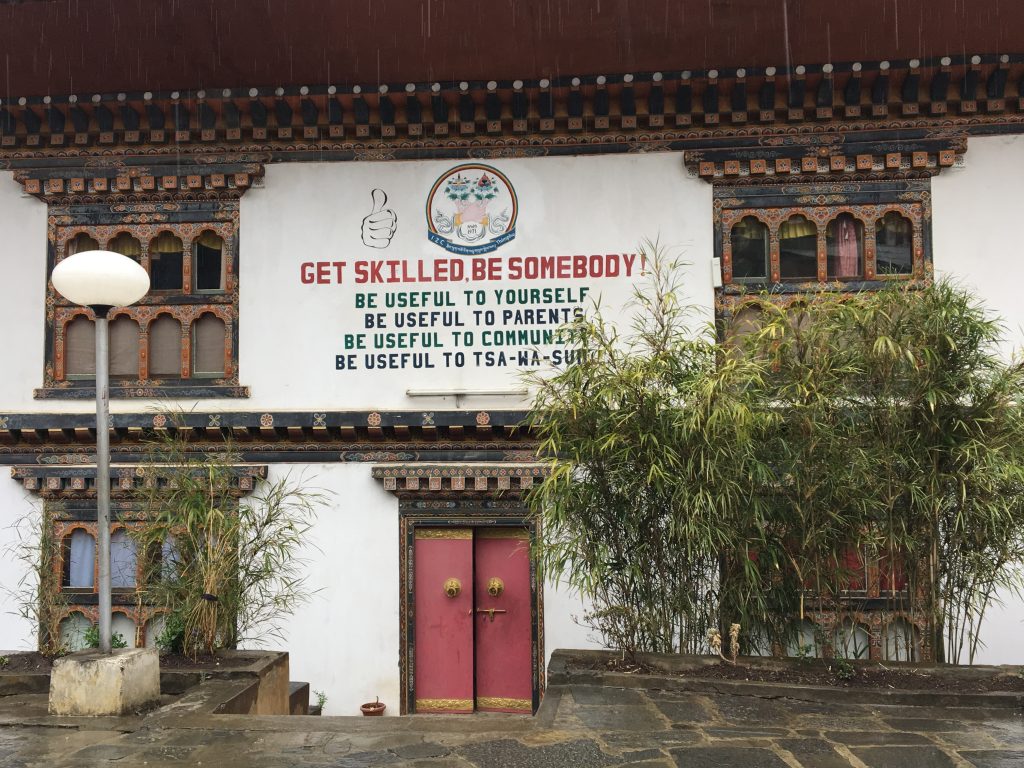 The students train for up to six years to perfect one of Bhutan’s 13 traditional arts including painting, carving sculpture, tailoring etc. Kencho explained that they need to study for a long time so they are perfect at their craft. We certainly saw lots of evidence, not just on items for sale but on the intricate carvings and paintings on homes and in temples.
The students train for up to six years to perfect one of Bhutan’s 13 traditional arts including painting, carving sculpture, tailoring etc. Kencho explained that they need to study for a long time so they are perfect at their craft. We certainly saw lots of evidence, not just on items for sale but on the intricate carvings and paintings on homes and in temples.
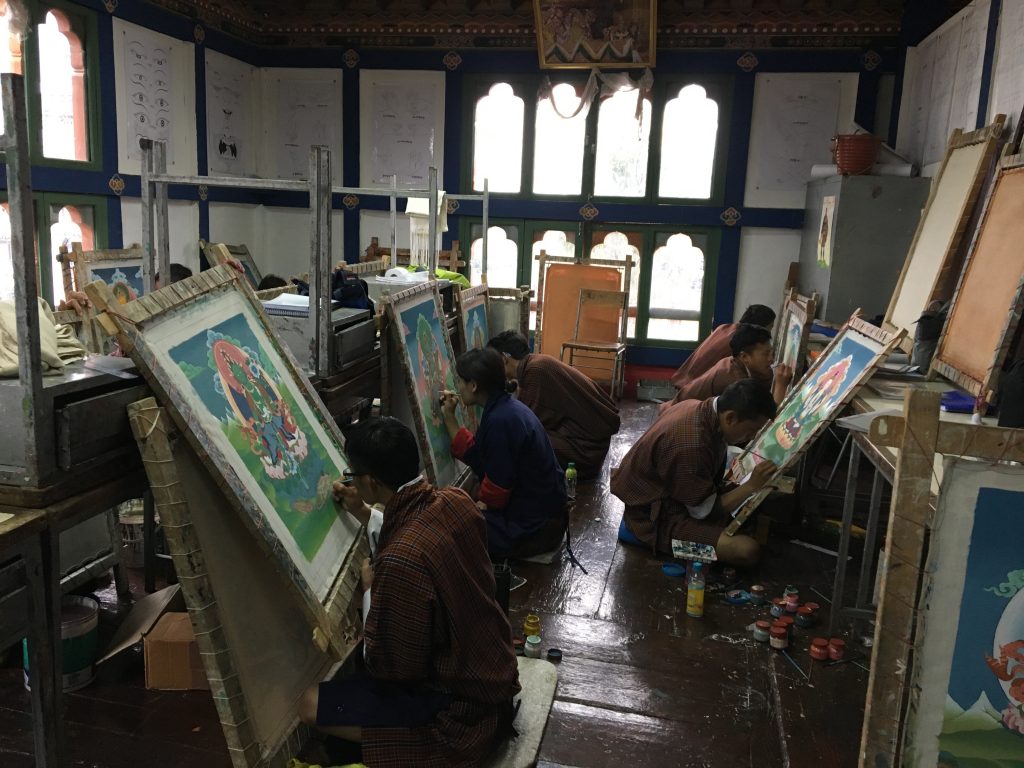 Another of Bhutan’s crafts is weaving and the National Textile Museum is an excellent place to learn more about it. A modern building houses some fabulous examples of the national dress- the Gho for men and the Kira for women – as well as displaying some of the winners of the annual competition set up by one of the queen mothers.
Another of Bhutan’s crafts is weaving and the National Textile Museum is an excellent place to learn more about it. A modern building houses some fabulous examples of the national dress- the Gho for men and the Kira for women – as well as displaying some of the winners of the annual competition set up by one of the queen mothers.
We also saw paper making in action at a local factory where a row of women were apparently separating the bark but mostly seemed to be chatting and checking their mobile phones! Much busier was the very skilled lady creating the sheets of paper ready for drying.
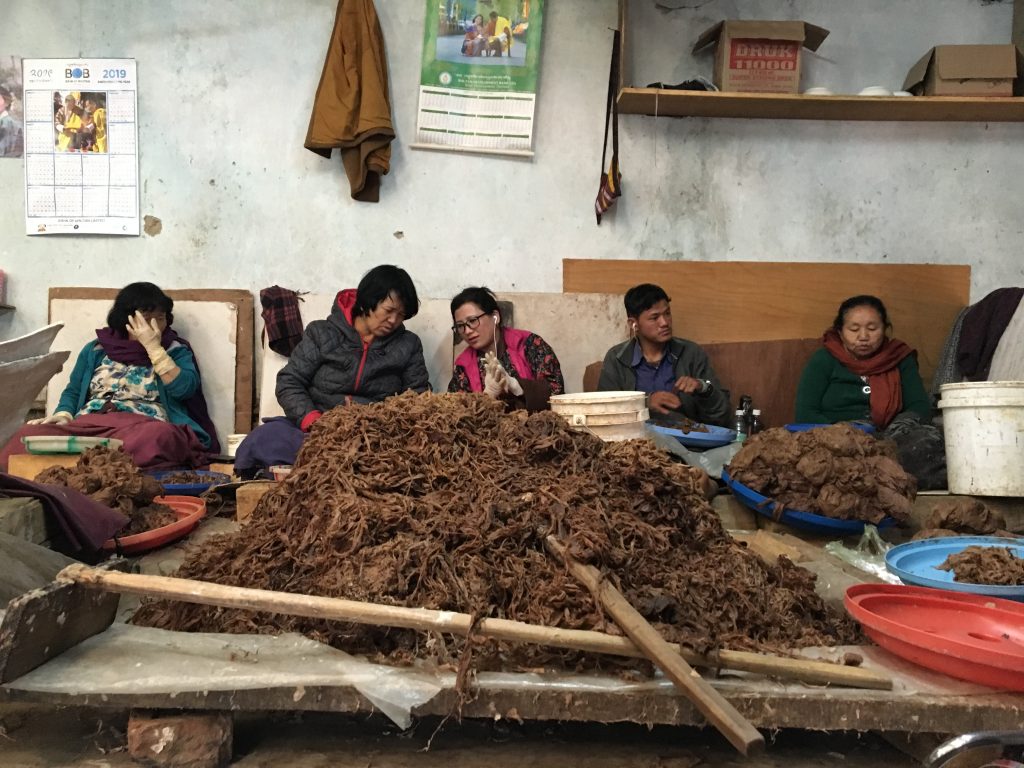 Lots of paper products are on offer at Thimphu’s post office, but the reason we wanted to go there was to get a very unique souvenir – our own set of stamps. It’s brilliantly easy to do. I simply airdropped a photo from my phone to the lady on the counter and within seconds she was printing out a set of stamps with my picture that I could use to send postcards home. Haven’t actually sent a postcard in years but this opportunity couldn’t be missed!
Lots of paper products are on offer at Thimphu’s post office, but the reason we wanted to go there was to get a very unique souvenir – our own set of stamps. It’s brilliantly easy to do. I simply airdropped a photo from my phone to the lady on the counter and within seconds she was printing out a set of stamps with my picture that I could use to send postcards home. Haven’t actually sent a postcard in years but this opportunity couldn’t be missed!
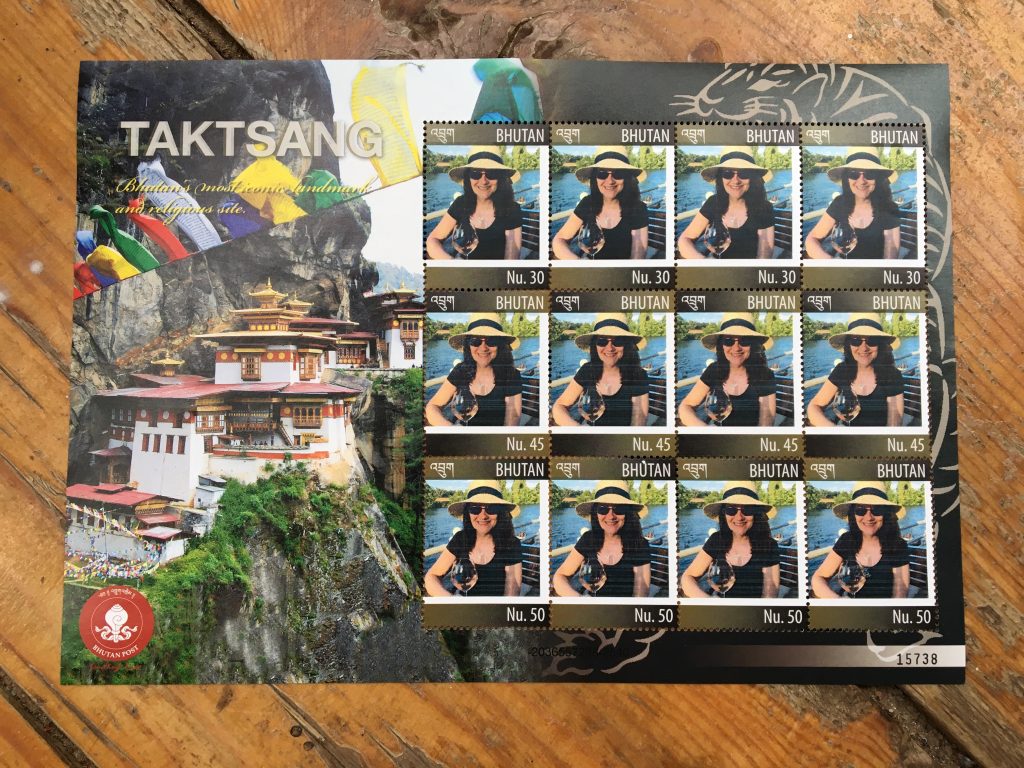 Our final visit with Kencho that day was to Changangkha Lhakhang, a 12th century temple where parents bring their children to get a protective blessing. That seems ironic really as it was originally built as a fortress for the eldest son of a Buddhist master who was told he would have 7 children but 3 would be bad. To weed out the bad ones he took each baby and put it in the river. If it washed up on the side it was a good one and if it drowned it was a bad one. Pretty brutal!
Our final visit with Kencho that day was to Changangkha Lhakhang, a 12th century temple where parents bring their children to get a protective blessing. That seems ironic really as it was originally built as a fortress for the eldest son of a Buddhist master who was told he would have 7 children but 3 would be bad. To weed out the bad ones he took each baby and put it in the river. If it washed up on the side it was a good one and if it drowned it was a bad one. Pretty brutal!
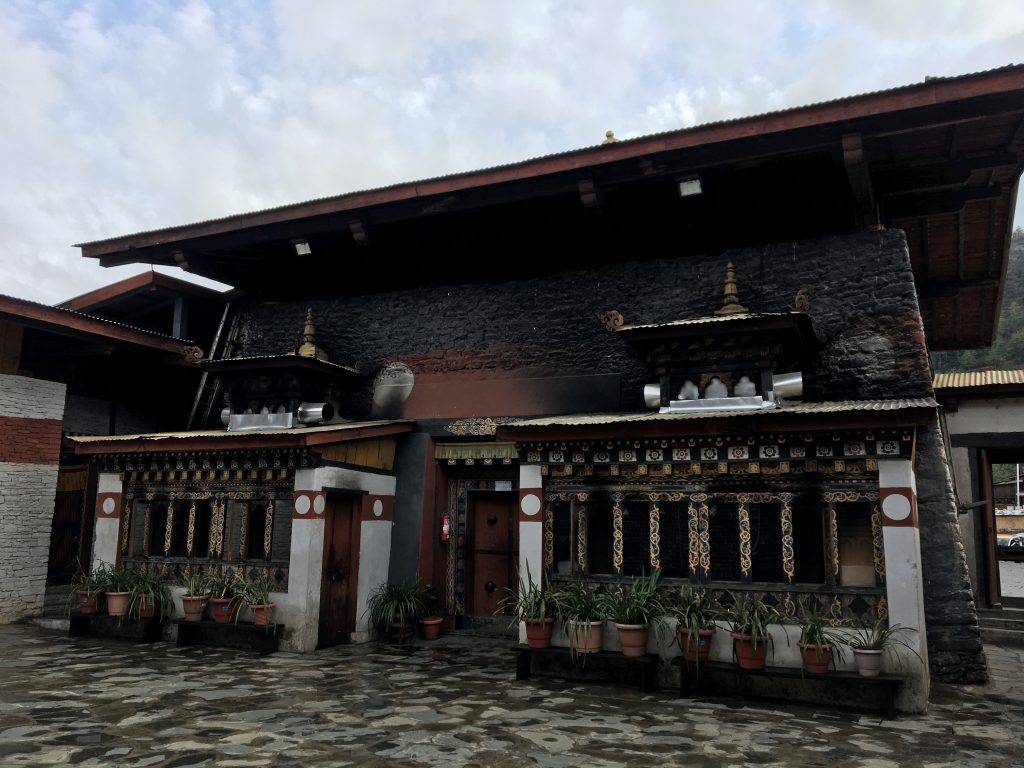 Still the locals don’t seem to be deterred and Kencho was asked to hold a very cute tiny baby while his father prayed for him. Outside the temple is pretty special too as its position a ridge above the city gives great views over Thimphu.
Still the locals don’t seem to be deterred and Kencho was asked to hold a very cute tiny baby while his father prayed for him. Outside the temple is pretty special too as its position a ridge above the city gives great views over Thimphu.
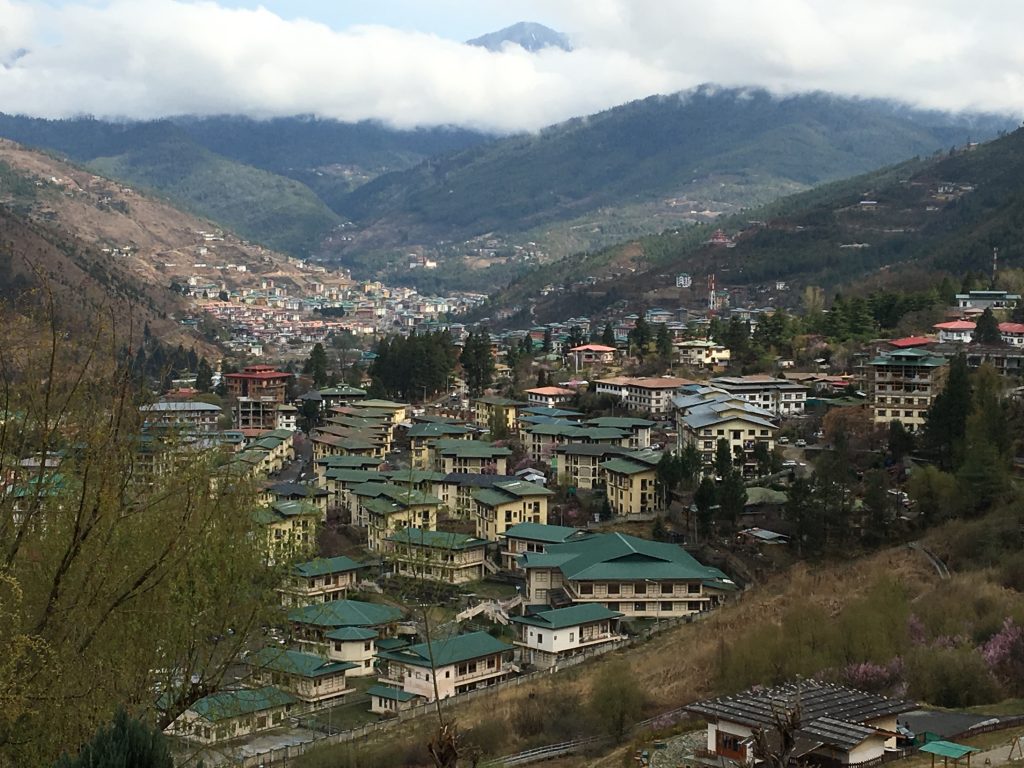 Believe it or not after all of that it was till only 4pm when we were dropped back at the Druk Hotel, so we seized the guide and driver free time to have a wander around Thimphu centre on our own. We were dying the see the traffic cops in action just along the street and they didn’t disappoint with their balletic arm signals. Evidently they tried traffic lights for a while here but it didn’t stick.
Believe it or not after all of that it was till only 4pm when we were dropped back at the Druk Hotel, so we seized the guide and driver free time to have a wander around Thimphu centre on our own. We were dying the see the traffic cops in action just along the street and they didn’t disappoint with their balletic arm signals. Evidently they tried traffic lights for a while here but it didn’t stick.
After browsing a few of the many souvenir shops and a religious shop to buy temple hangings (which of course won’t look at all out of place when we get home…) we went in search of momos. These are a local specialty, essentially steamed dumplings filled with cheese or meat. We found them in very nice cafe bar called Thijha right next to the hotel. Hands down the best momos we had all trip.
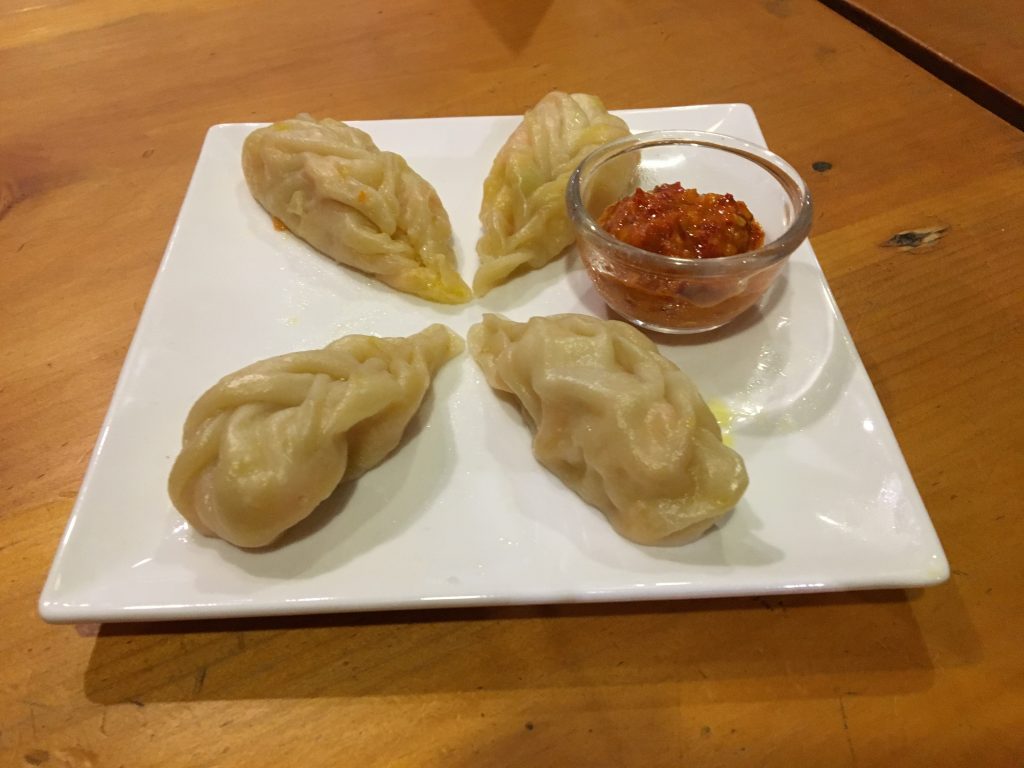 Talking of eating and drinking we found it a bit hard to get reliable information about drinks prices before we went to Bhutan. And as credit card use is limited you really need to take enough cash to change into local currency for the whole trip. The cheapest option for alcohol was the local Druk lager at around 300 Nu (Bhutanese Ngultrum) for a large bottle, that’s currently about £3.50. Wine was pretty costly at around 600-700 Nu a glass. Bottles were often 2,400 Nu. The cheapest we bought was 2,000 in the Haa Valley where we didn’t expect to get wine at all!
Talking of eating and drinking we found it a bit hard to get reliable information about drinks prices before we went to Bhutan. And as credit card use is limited you really need to take enough cash to change into local currency for the whole trip. The cheapest option for alcohol was the local Druk lager at around 300 Nu (Bhutanese Ngultrum) for a large bottle, that’s currently about £3.50. Wine was pretty costly at around 600-700 Nu a glass. Bottles were often 2,400 Nu. The cheapest we bought was 2,000 in the Haa Valley where we didn’t expect to get wine at all!
You can change sterling or US dollars at Paro airport on arrival. But when you leave change it back at the bank outside before checking in as there is no bank or exchange counter once you’re through to the departure lounge. The shops will change it for you but its not a good rate.
As mentioned in my first Thimpu post, food is included as part of Bhutan’s daily tourist fee. It was generally pretty good quality but lacked variety. The Government vets restaurants make sure they are suitable – that they have good hygiene standards and don’t serve food to tourists the way that the Bhutanese like it – very very spicy! As a result they all tend to serve up the same meals for tourists, though there was sometimes a new thing to try and we did have a very nice lunch at Thimphu’s Bhutan Orchid restaurant.
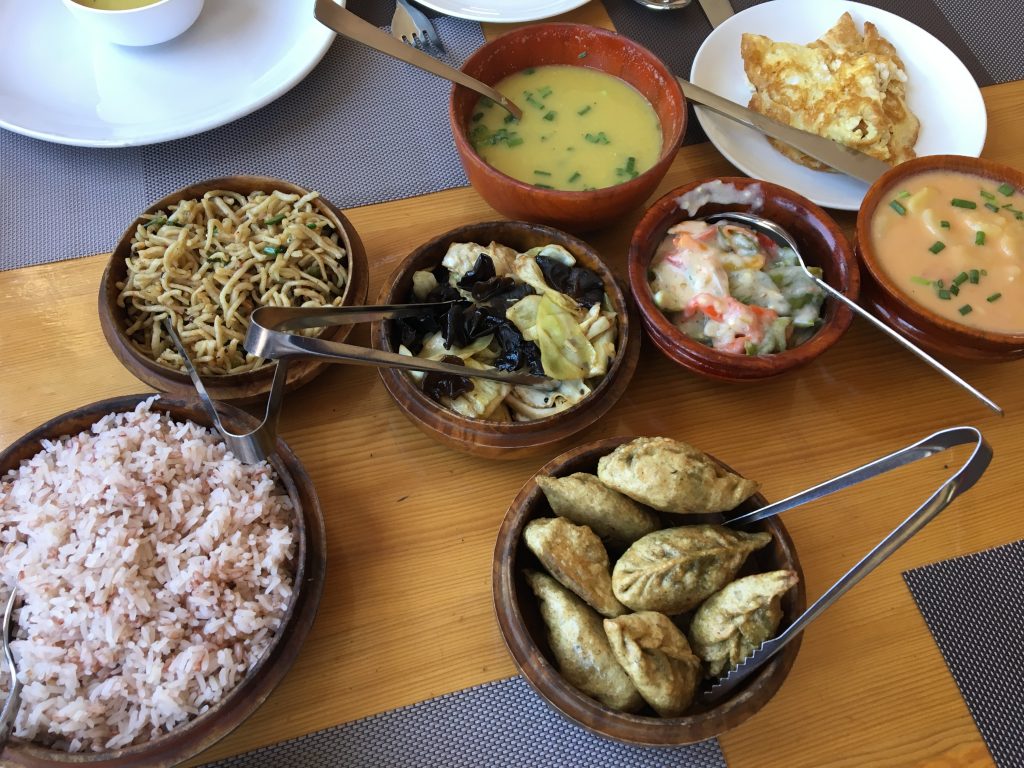 On our second evening in Thimphu we did decide to go off piste (much to our guide’s horror) and we ate at Cloud 9, a bar and restaurant in Clocktower Square where we’d had a drink the evening before. We knew Thimphu was our best bet for getting international food in Bhutan, so we opted for burgers and as it was national dry day we had special English ‘tea’ which tasted a lot like the wine we’d had the night before! If you’re discreet the locals don’t mind you breaking their no alcohol rule.
On our second evening in Thimphu we did decide to go off piste (much to our guide’s horror) and we ate at Cloud 9, a bar and restaurant in Clocktower Square where we’d had a drink the evening before. We knew Thimphu was our best bet for getting international food in Bhutan, so we opted for burgers and as it was national dry day we had special English ‘tea’ which tasted a lot like the wine we’d had the night before! If you’re discreet the locals don’t mind you breaking their no alcohol rule.
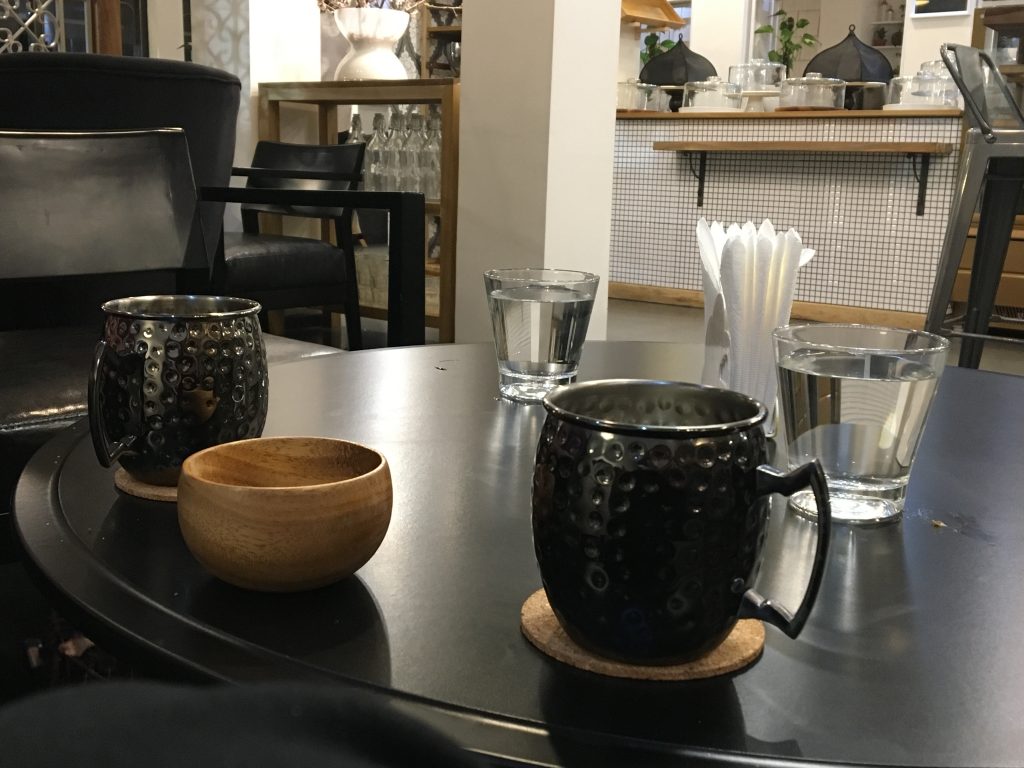 And that was the end of our stay in Thimphu and our second day in Bhutan, but it already felt like we’d been there much longer. With so much to see, learn and experience we couldn’t wait for the next part of our adventure.
And that was the end of our stay in Thimphu and our second day in Bhutan, but it already felt like we’d been there much longer. With so much to see, learn and experience we couldn’t wait for the next part of our adventure.
Click on an image below to scroll through more photos in the gallery and visit the Bhutan section of my blog for more posts now and in the future about this very special country.














